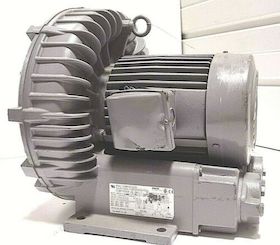
Curated with aloha by
Ted Mooney, P.E. RET

The authoritative public forum
for Metal Finishing 1989-2025

-----
Black stains when air agitation is used in nickel sulfamate plating
In the plating shop we are using electrolytic nickel as final coating; the chemistry of the bath is very stable if we speak about nickel concentration, pH, acid boric, brightener, wetting agent, etc.
With this bath we are using air agitation since long time, but at the same time we were having a lot of quality issues from this bath -- issues like black stains in the area where the part face is being hit with the air agitation. What we have found is that once we turn off the air agitation there are no more quality issues.
I would like to know if you guys found the same problem before of black stain because for us this is now temporarily fixed but it will come back if somebody turns on the air agitation.
Thank you in advance by your advices.
plating shop engineer - Sonora, Mexico
November 16, 2011
|
|
A. Platers know, but equipment people will never learn, that when the air hits the part it displaces solution and current. In your case it has the effect of lowering the apparent c.d.and "dummying" out the copper contamination (which comes out black) that is common with the anodes. Move the air spargers to the outside of the tank so that most of the air does not hit the parts.  Robert H Probert Robert H Probert Technical Services Garner, North Carolina  A. Are you using blower air or compressor air. - Navarre, Florida |
A. I agree with Mr. James
I would like to add one more point that the holes of the air agitation pipe should face towards the bottom of the tank so that the air to hit directly to the bottom of the tank and then it come out flowing toward the top. But in this case continuous high filtration is required.
- Bangalore, India
A. Your dulled nickel deposits are almost certainly due to localised solution depletion and burning of the deposit. This is caused by too high localised agitation by the air, so turn the agitation down or redesign the air agitation system so it does not impinge directly on the workpiece. It also goes without saying that the air supply must be clean and grease and oil free, otherwise you will get into all sorts of major problems with solution contamination.
Agitation is something that is often disregarded by platers, but it is an essential part of a successful process; either too much or too little agitation will result in poor plating. If the agitation is too high, it can also override the intended benefits from brighteners and levelers.

Trevor Crichton
R&D practical scientist
Chesham, Bucks, UK
Q, A, or Comment on THIS thread -or- Start a NEW Thread
